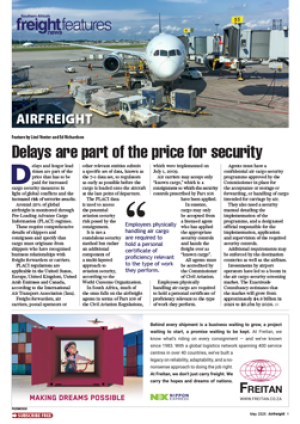I mproving logistics and smoother border crossings in many parts of the continent are paving the way for greater intra-African trade. According to the African Development Bank’s African Economic Outlook 2017, trade between African countries expanded from 10% of total trade in 2000 to about 16% in 2014. Opportunities for continued growth were highlighted by South African finance minister Malusi Gigaba in his mid-term budget speech. “Our firms are in a great position to capitalise on renewed growth in Africa,” he told parliament. South Africa’s manufacturing sector puts it in a strong position, according to the Economic Outlook report. It cites low manufacturing and processing capacity as a major limiting factor for trade among African countries. Intra-African trade in manufacturing declined from 18% in 2005 to about 15% between 2010 and 2015. Most of Africa’s primary exports undergo little processing before they exported. According to Gigaba, economic growth in sub-Saharan Africa is projected to average 2.6% in 2017, and climb to 3.4% in 2018. “Growth outcomes vary across the region, but there are many opportunities. “For example, Kenya and Ethiopia are expected to grow at 5% and 8.5% respectively in 2017 due to strong domestic demand and infrastructure investment,” he said. South Africa is not the only country in the region to have identified the opportunities. On the same day Gigaba was delivering his speech, Namport chief executive officer Bisey Uirab said at the opening of the 11th Namport Erongo Business and Tourism Expo 2017 “we are working tirelessly to position ourselves as a hub port both for Namibia and the SADC region in relation to the strategic geographic location that we have. “We have taken deliberate initiatives to heed the call by our political leaders both at SADC and AU level, that Africans must start to trade among themselves, and that those who have the capacity to assist in providing their expertise, resources and infrastructure to facilitate such trade, do so. “That is exactly what we are doing through our dry port and corridor development initiatives. “We understand that the world is becoming a global village, and if businesses continue to focus only on inward-looking strategies at a time such as this, then unfortunately the adverse effect is a negative growth trajectory, regardless of the size of the industry. “SADC has a lot to offer our international trading partners and we are saying that we must be relentless in putting up excellent port, road, rail as well as supporting infrastructure for the region to trade with the world through our ports.” Gigaba announced plans to smooth the flow of goods through the Beitbridge border post and other ports of entry. “The Department of Home Affairs is working on revamping this and other ports of entry through public-private partnerships, which will improve the movement of travellers and trade facilitation.” But, competition is bound to grow. Countries across the continent, including South African neighbours Namibia, Botswana as well as those farther to the north, are promoting industrialisation and manufacturing, which will create much-needed jobs and improve the balance of payments. According to the African Economic Outlook report from 2007 to 2015, the continent’s light manufactured goods imports tripled to reach US $260 billion. Africa’s prospects for greater regional trade are also highlighted by its consumer market of nearly one billion people, the rising number of affluent consumers and the increasing mobility of investment capital.
IMAGE
.PNG)

